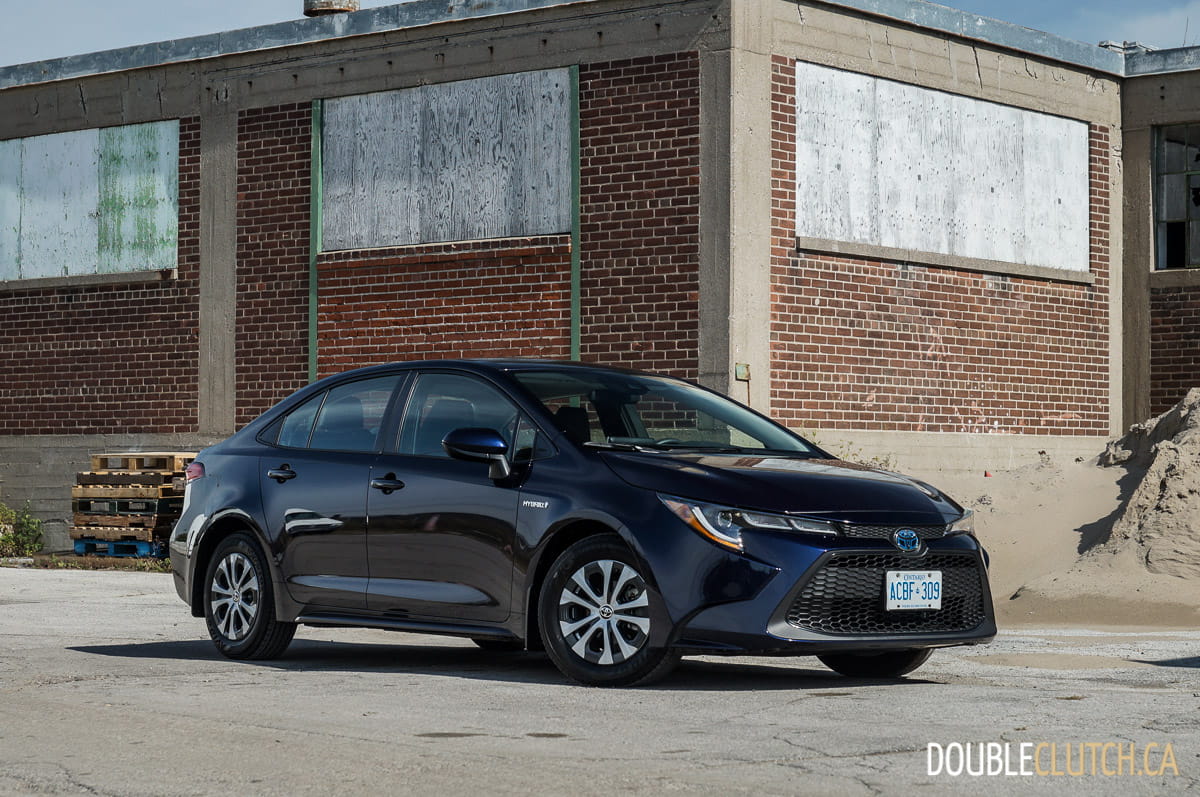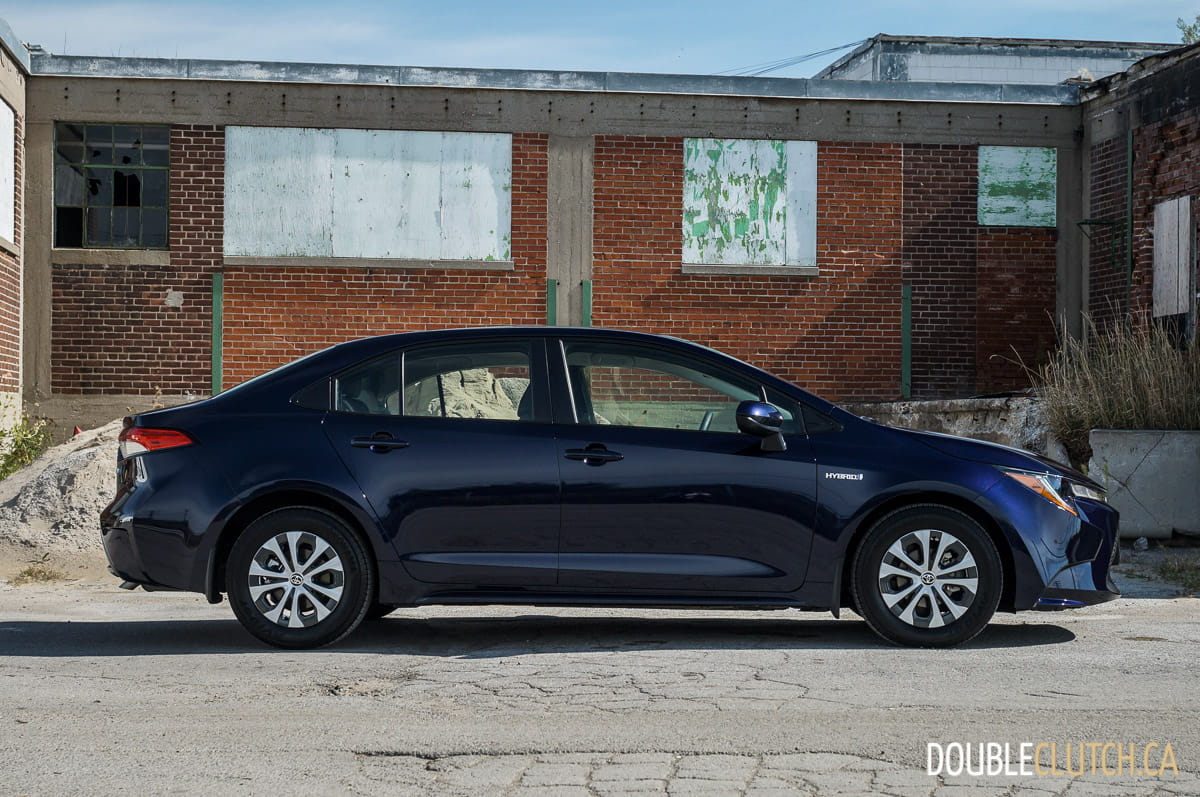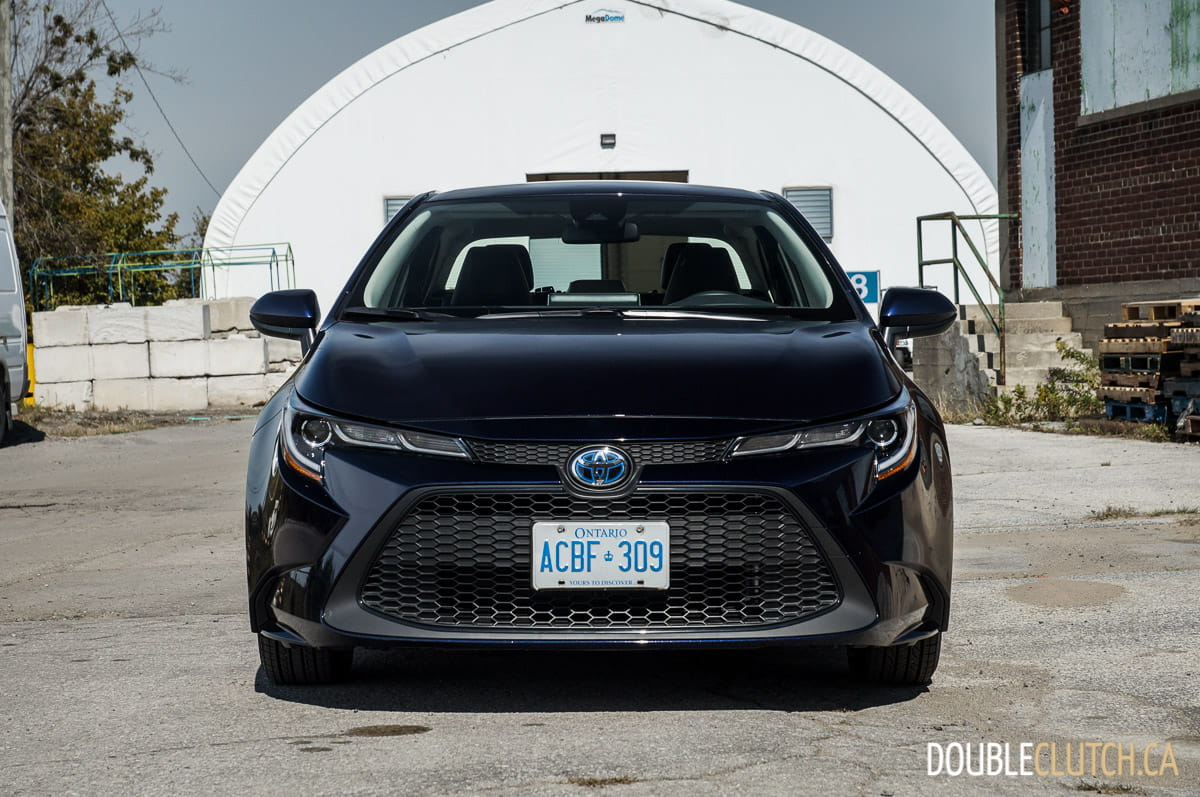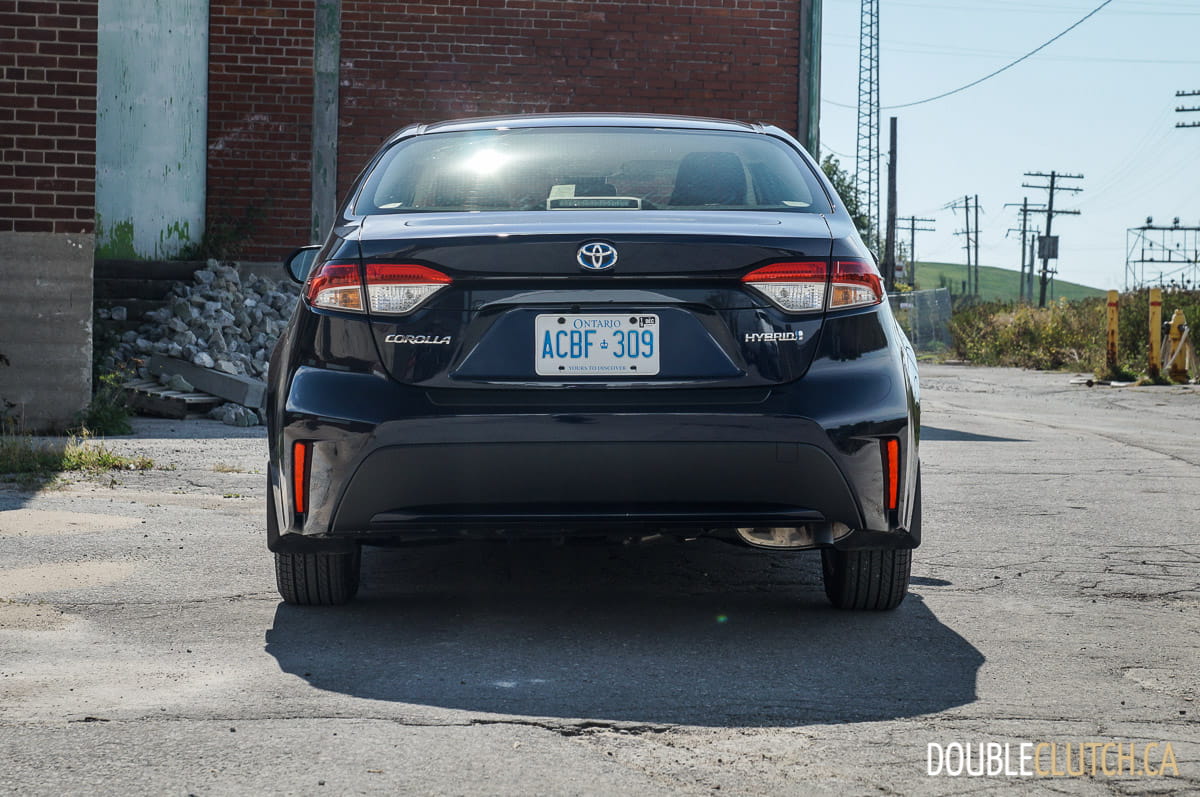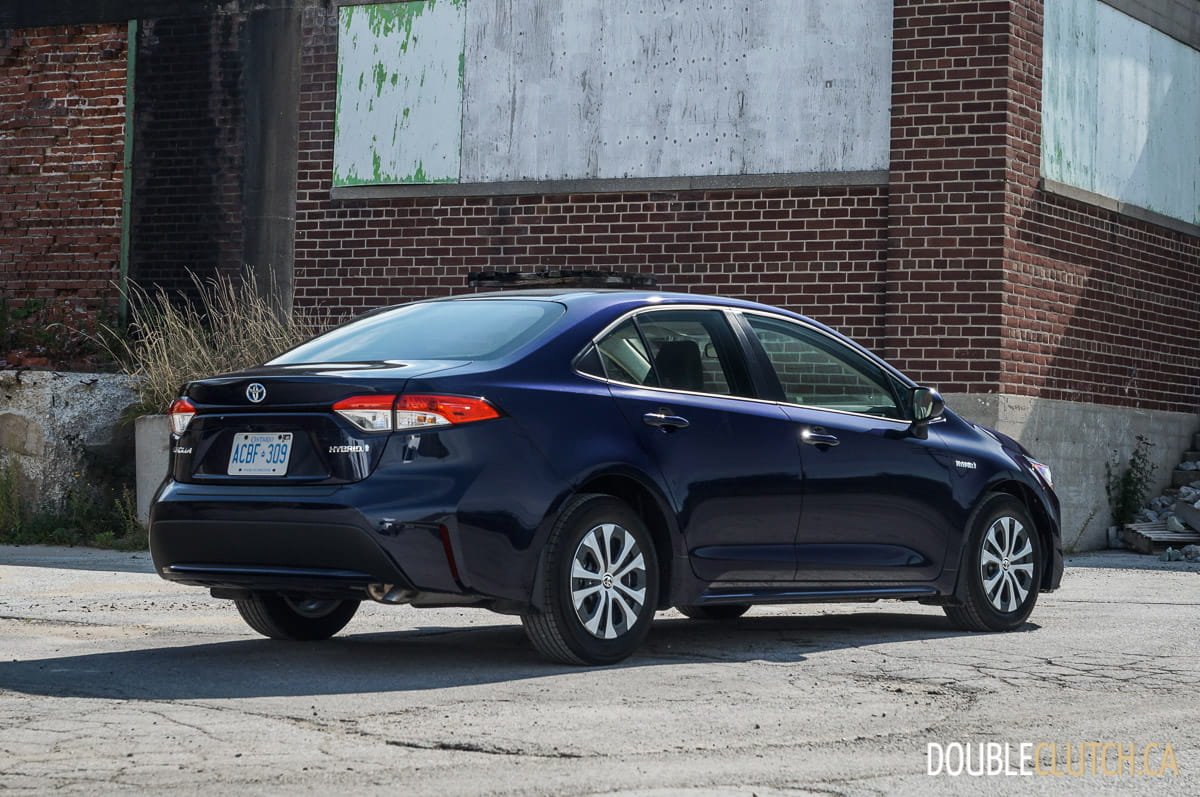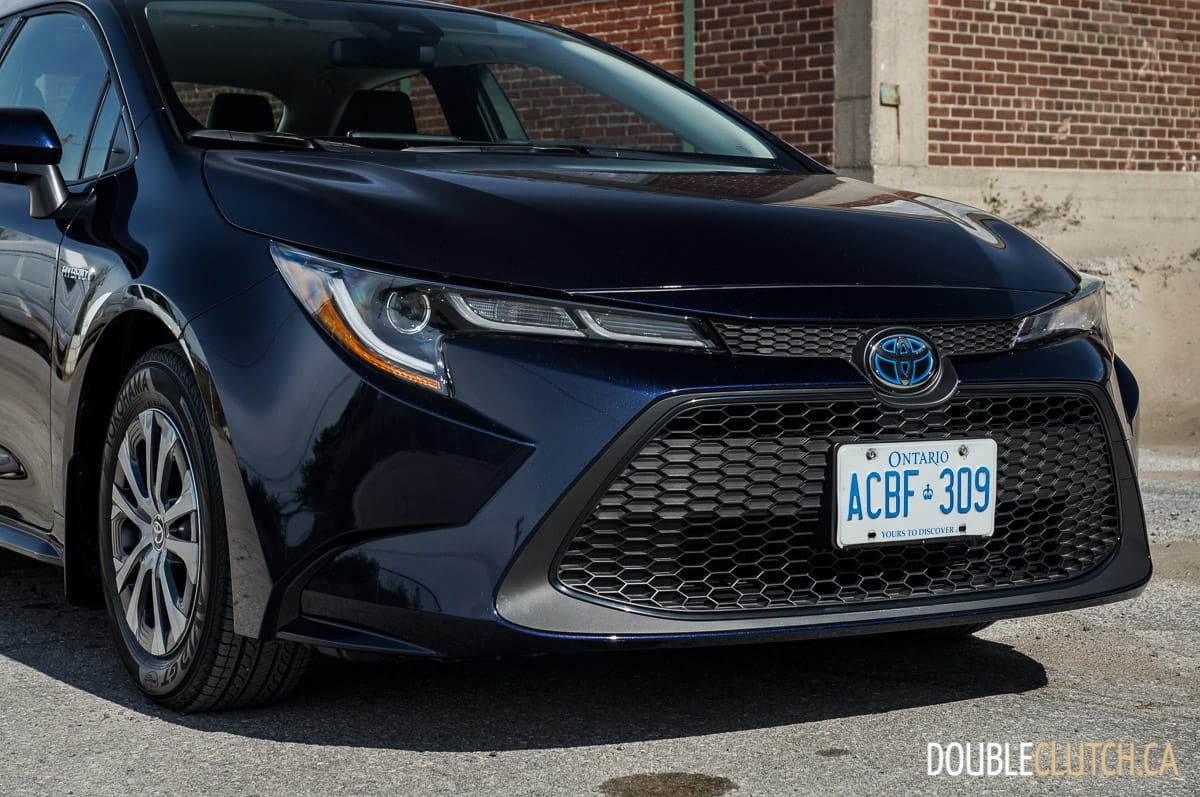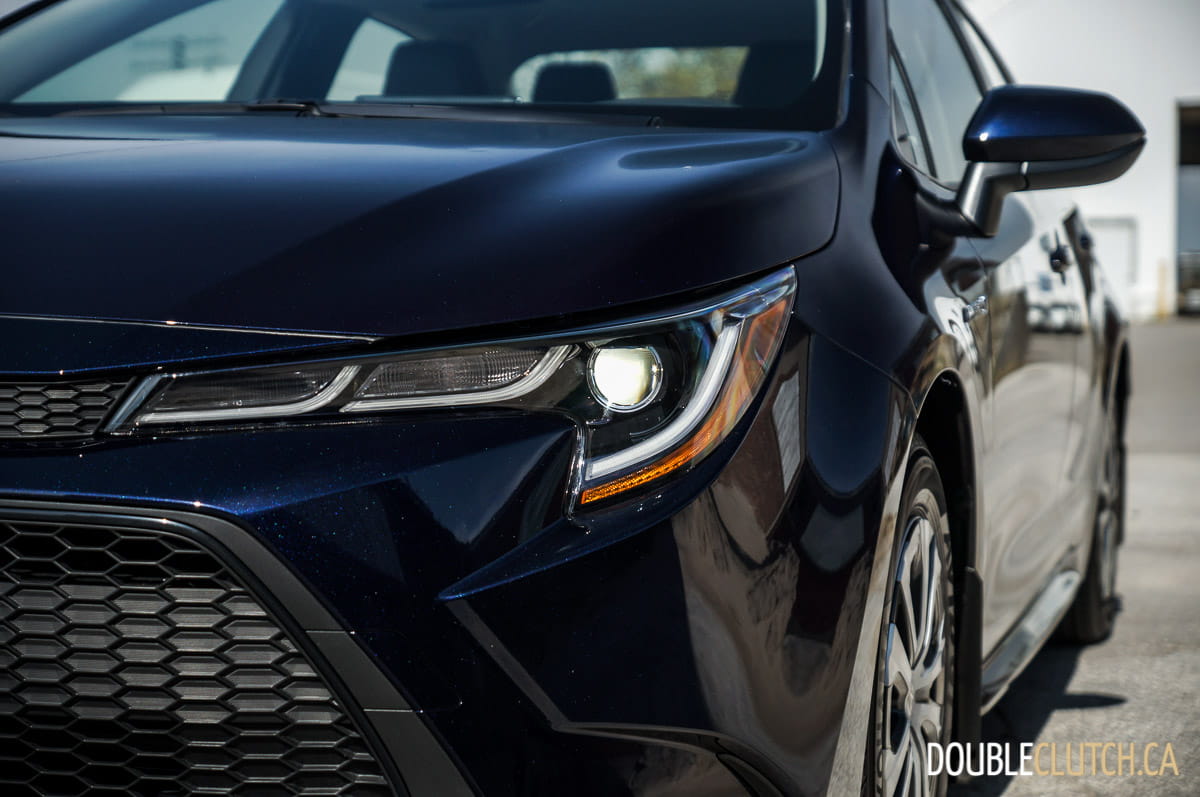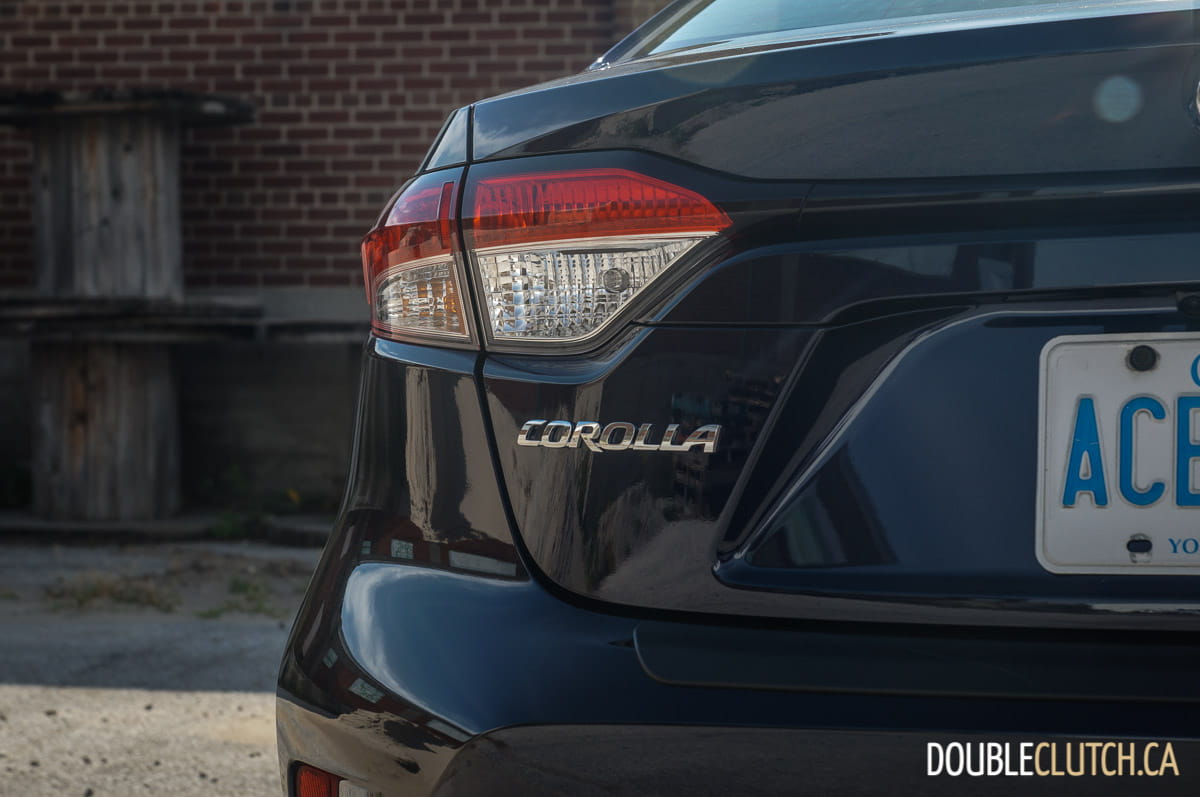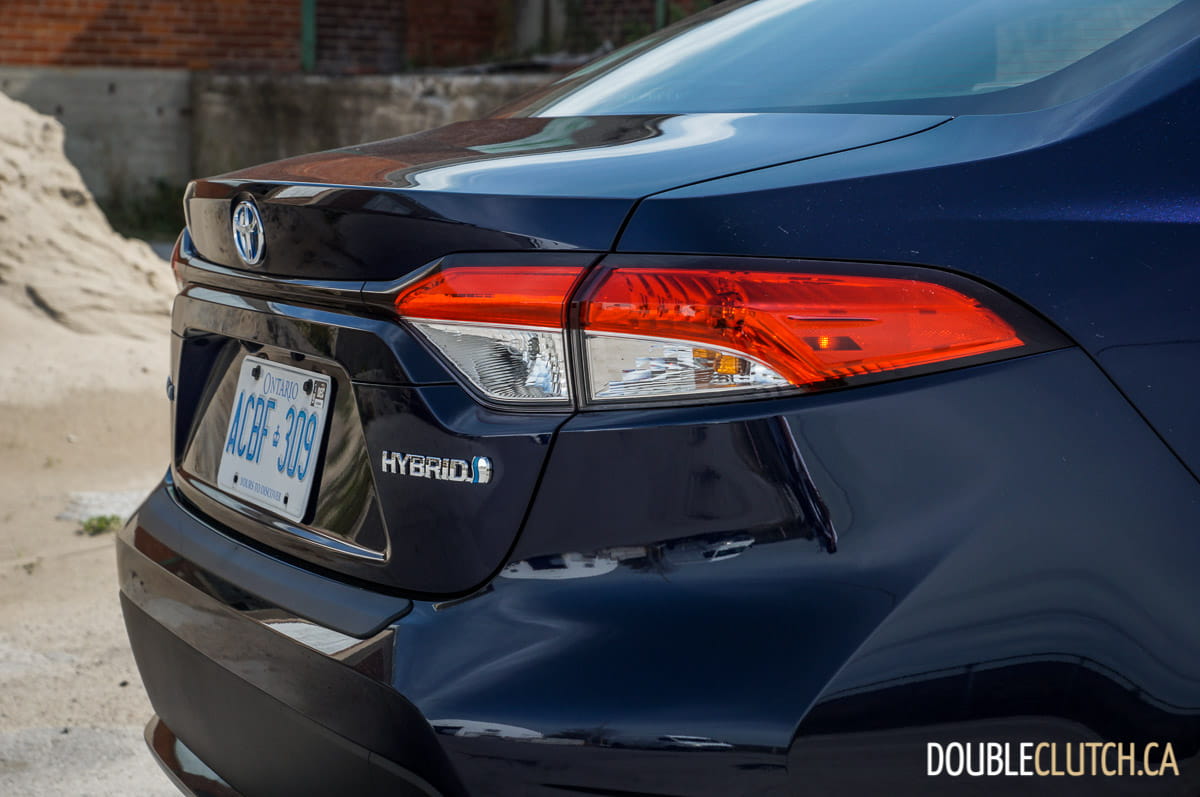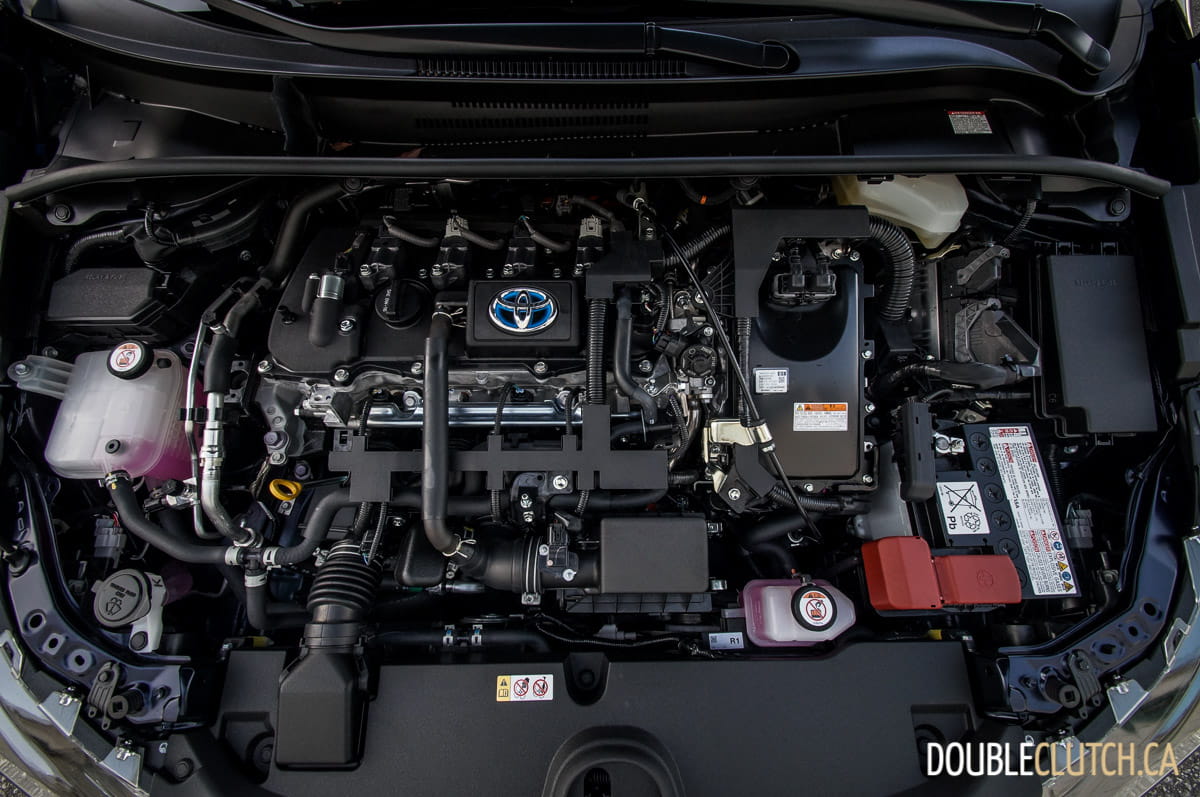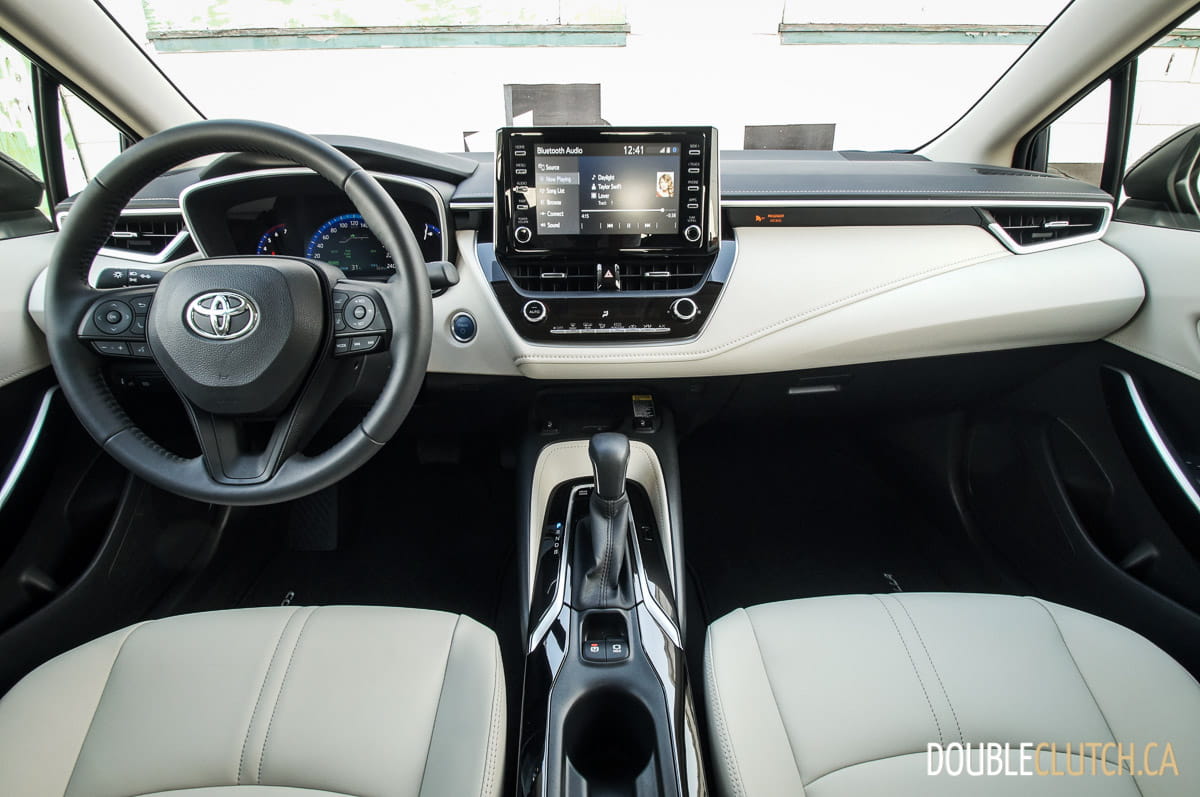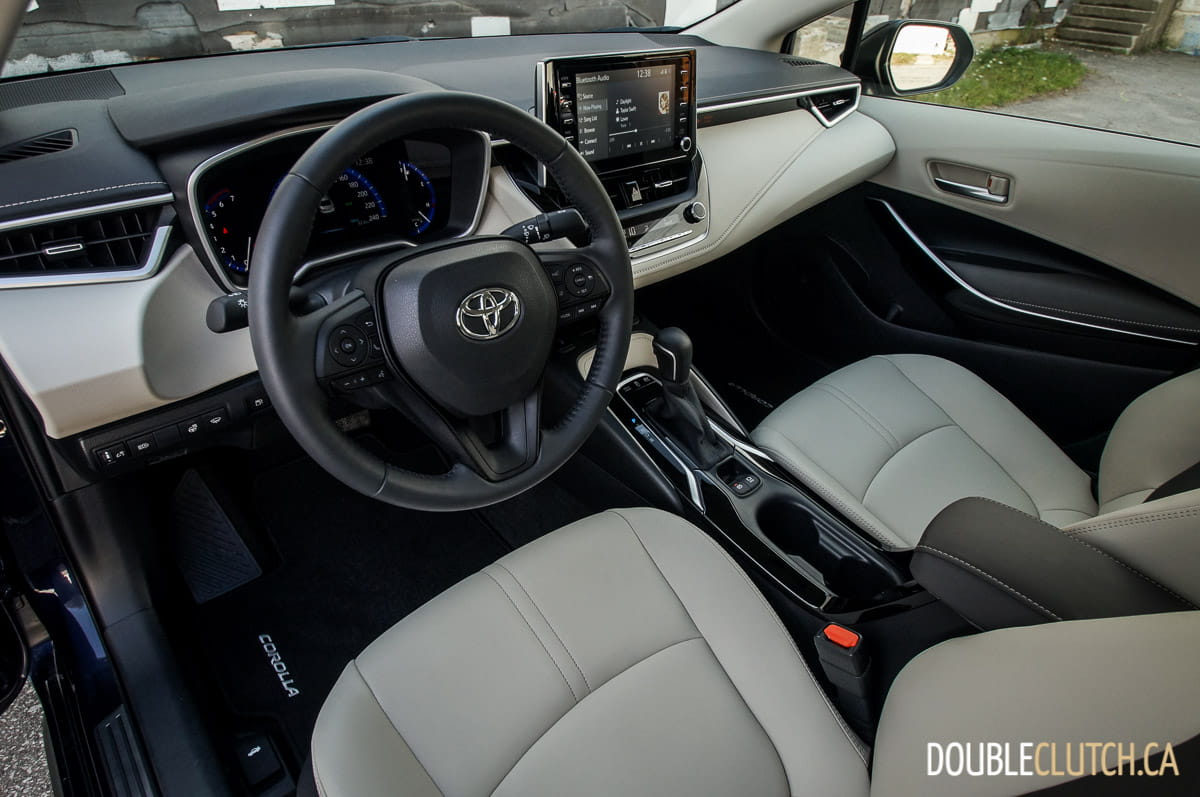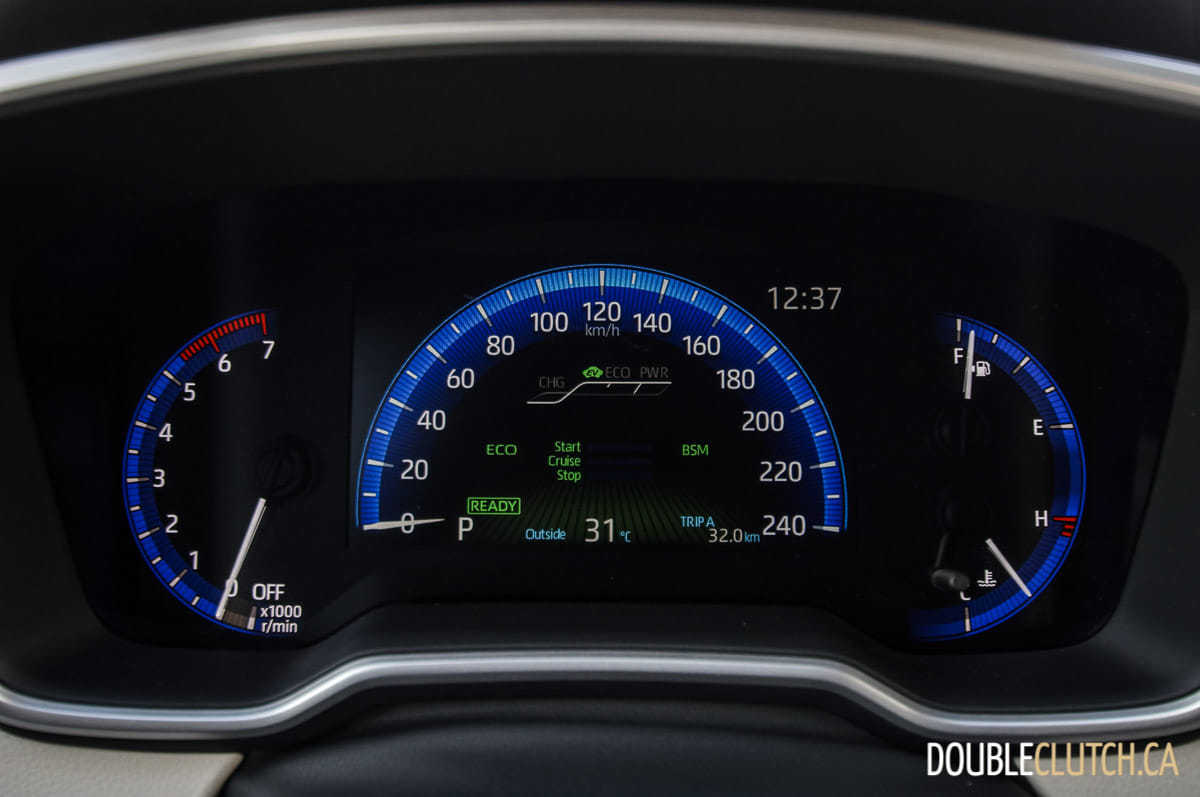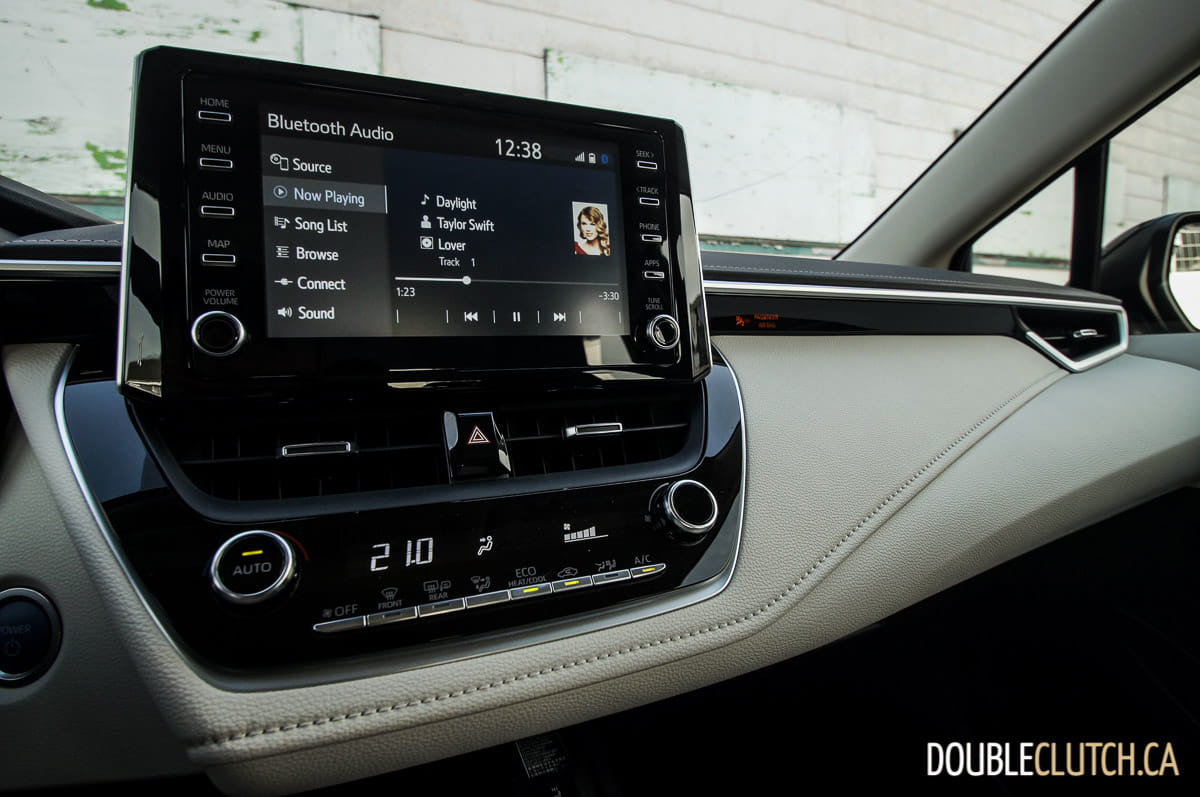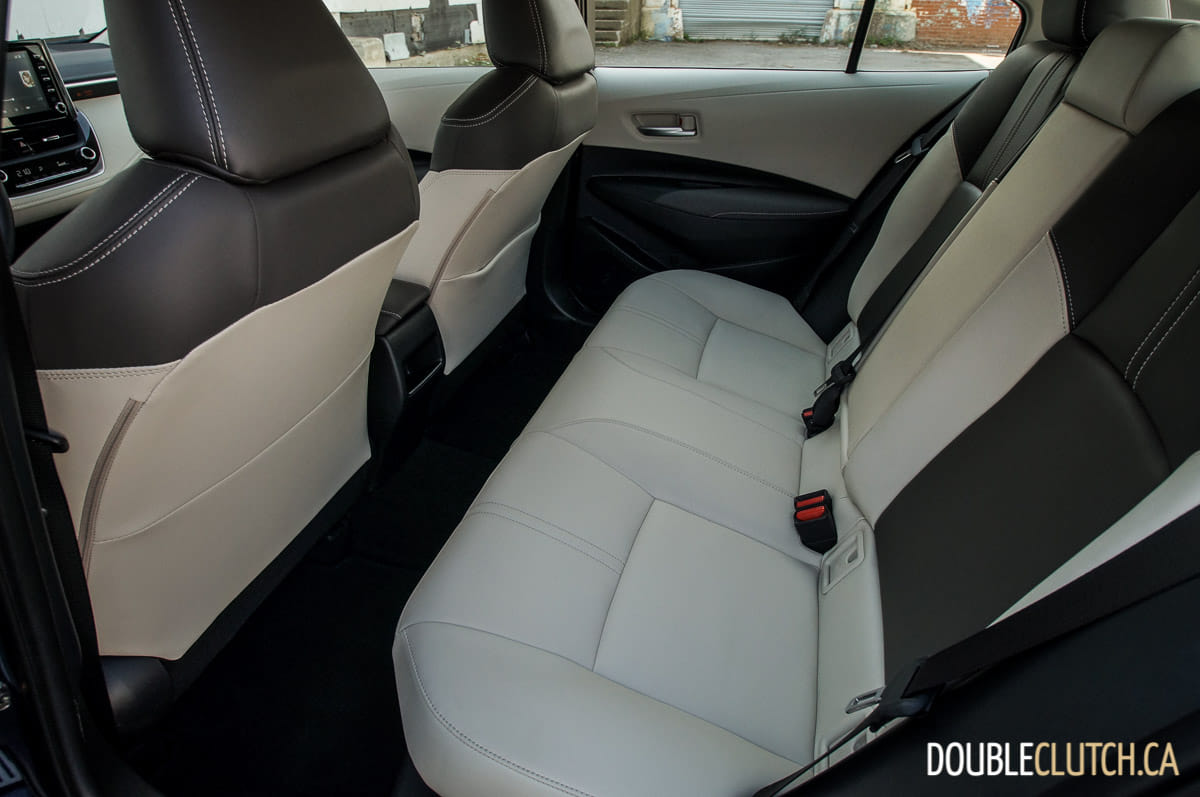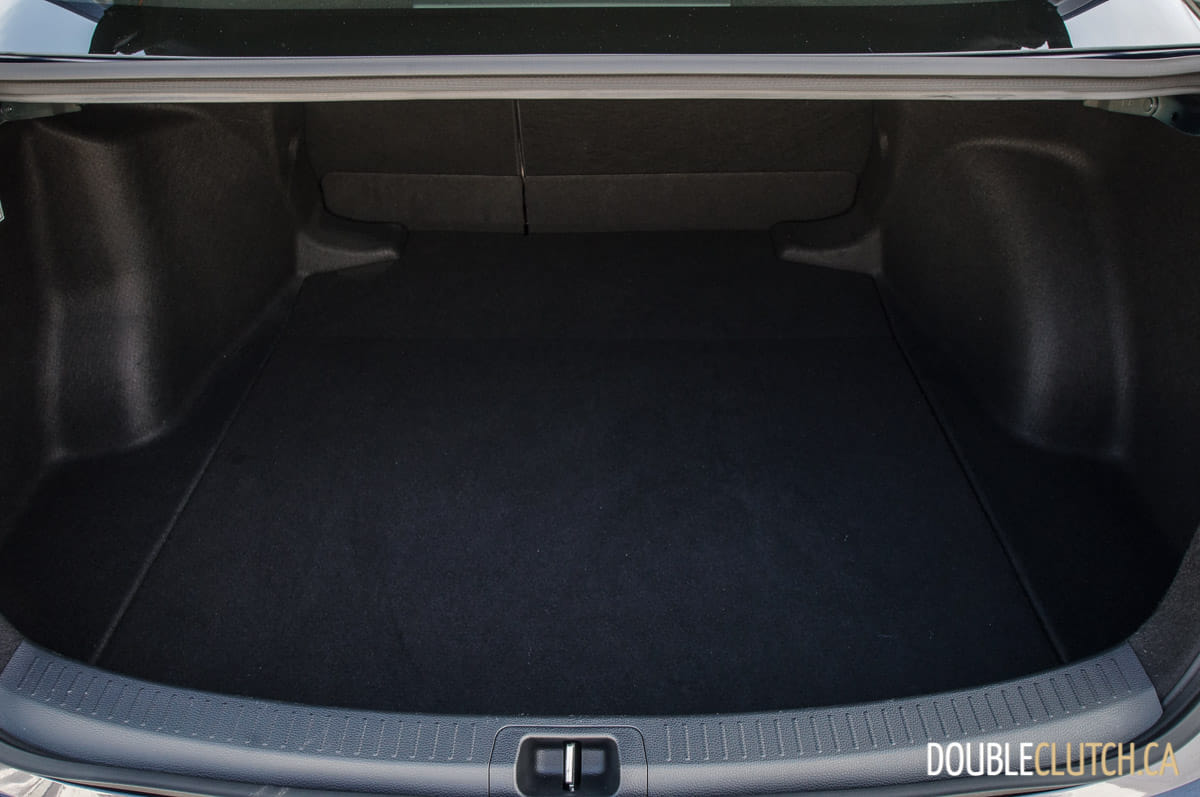If you’ve listened to the DoubleClutch.ca Magazine Podcast (link here), you may have heard our team waxing poetic on the current crop of products on the new Toyota New Global Architecture (TNGA) platform. This week, we’re talking about the 2020 Toyota Corolla Hybrid, which is an all-new powertrain option for the bread and butter compact car nameplate that’s been around for over half a century. Historically – at least, in North America – only conventional gasoline engines were available. With a power plant lifted out of the controversially-styled Prius, having a gas-electric hybrid Corolla means that there is a more ordinary option to saving fuel in the Toyota lineup.
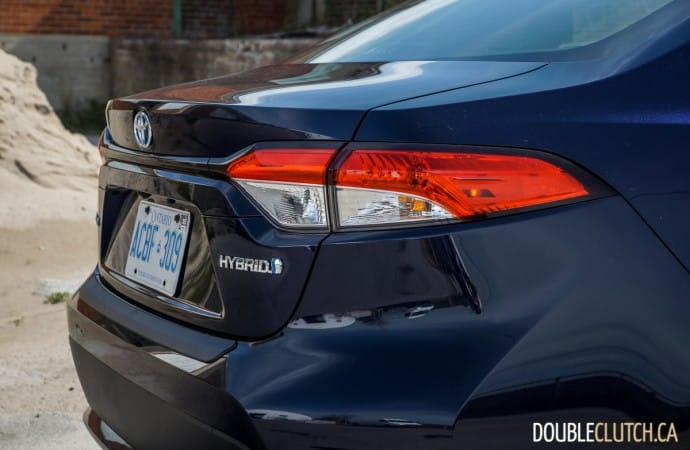
Most often, the Corolla buyer is looking for a compact car that’s cheap to run, cheap to insure, and is a good value for the money. For 2020, the new TNGA platform on which the Corolla is built also underpins vehicles like the Camry, RAV4, and Avalon. The base Corolla Hybrid starts at a reasonable $24,790, and is equipped similarly to the $3,000 cheaper gasoline LE trim. Standard features include automatic single zone climate control, heated cloth front seats, pushbutton start, automatic LED headlamps, an 8-inch touch screen infotainment system with six speakers, and rear disc brakes with automatic parking brake.
The Corolla Hybrid we had on test for a week came equipped with the $2,000 Hybrid Premium Package, bringing the as-tested total to $26,790. The package adds a leather wrapped heated steering wheel, ambient lighting, SofTex synthetic leather seats, driver lumbar support, heated rear seats, Qi wireless phone charging, and an eight-way power driver’s seat. Compared to the gasser Corolla XLE, the Hybrid with Premium Package includes most, but not all of the XLE’s creature comforts, and is actually $200 cheaper. To get the hybrid over the XLE, buyers will give up 16-inch alloy wheels (settling for mundane 15-inch units instead), and a power moonroof – that’s mostly it.
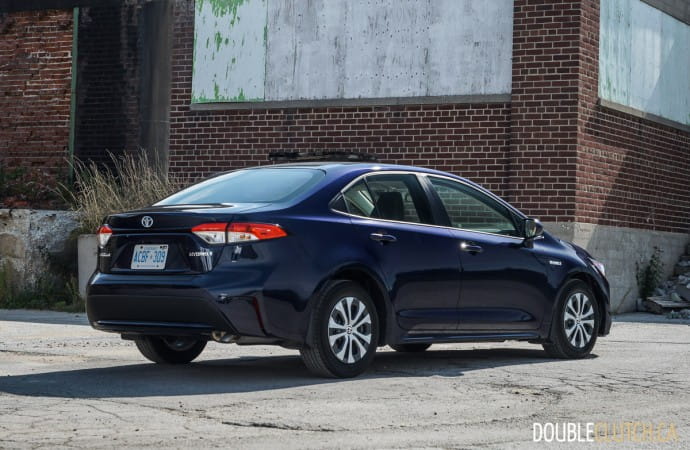
The Corolla’s hybrid powertrain comprises of two separate halves: a 1.8-litre internal combustion, gasoline inline four does the bulk of the work, and two electric motors provide a total system output of 121 horsepower. As a traditional hybrid, and unlike a plug-in hybrid electric vehicle (PHEV), the Corolla Hybrid does not need to be plugged in. When the brakes are applied, the electric motors are effectively run in reverse in what’s known as regenerative braking, sending otherwise wasted kinetic energy back into the battery for later use. The gas engine can also charge the battery if it gets too depleted.
A continuously variable transmission (CVT) makes short work of coordinating the two powertrains, and is a smooth operator. While at a Toyota Canada event testing out the 2020 GR Supra (reviewed here), other models were available to test, and we happened to be able to drag race a Hybrid model against a conventional LE with just a 139-horsepower gasoline inline four. Despite the horsepower deficit, the Hybrid managed to take the LE off the line, and proved to be the peppier choice around town.
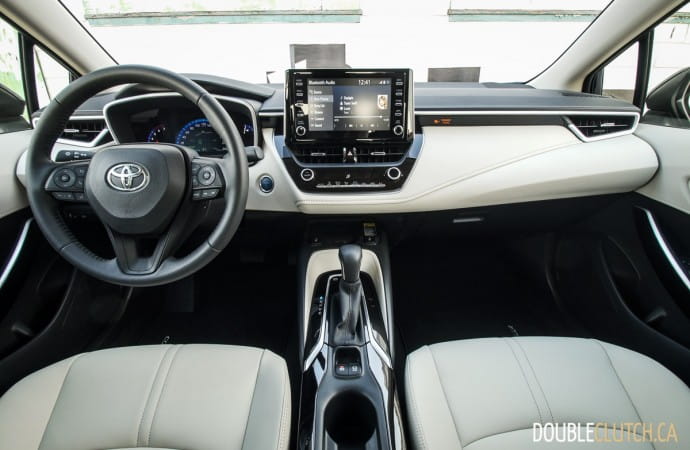
Natural Resources Canada fuel economy ratings for the 2020 Corolla Hybrid come in at 4.4L/100KM in the city and 4.5L/100KM on the highway. This is nearly a 40% improvement over the 8.1L/100KM city and 6.3L/100KM highway numbers for a Corolla XLE, and for the average driver, expect to save about $725 annually in fueling costs. For the base Hybrid and LE, this means that the $3,000 price delta should be paid back within four to five years, which is much better than the hybrids of yesteryear. Observed economy over a week beat the nominal figures at 3.9L/100KM in mixed driving. Part of this can be attributed to less heater and air conditioning use in fall weather. All Corolla models regardless of powertrain have a 50-litre fuel capacity.
Aside from impressive fuel economy, the biggest surprise of the 2020 Corolla model range has to be the handling and driving dynamics. For nearly three decades, the driving experience played second fiddle for many of Toyota’s models – a real performance dark ages, if you will. With the TNGA platform, that’s all changed, and even with 195/65R15 eco-oriented tires, the Corolla Hybrid is a very fun car to drive. The extra stiff chassis lets the independent front and rear suspension make the most of ride and handling, and cornering can happen at comically high speeds without body roll. It also does this with a very quiet cabin and good refinement levels.
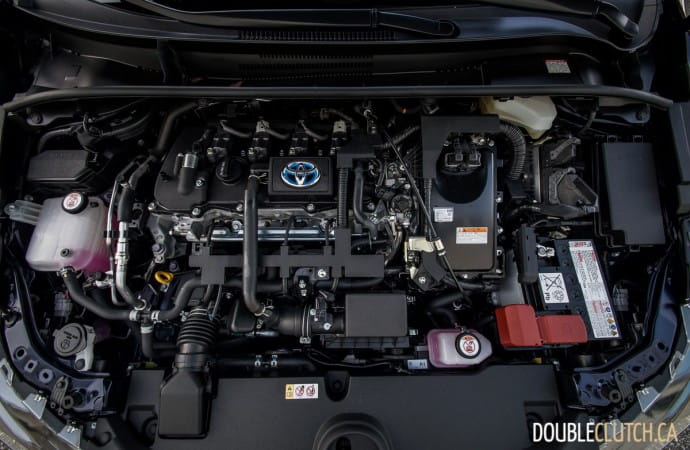
While the steering is light, it does offer reasonable feedback, and brake feel is on the so-so side. The low rolling resistance rubber does mean that understeer at the limit of grip comes on with a loud howl, but if there was ever a car that proved the adage of “it’s more fun to drive a slow car fast, than to drive a fast car slow”, this is it. Traditionally, the Mazda3 has assumed the fun-king distinction in the compact car class, but with its move to a torsion beam rear suspension and poor selection in both automatic and manual transmission gear ratios, the Corolla has managed to take the crown.
Amongst its peers, the 2020 Corolla range is pretty well near as good as it’s ever gotten, but that doesn’t mean that it’s perfect. The interior is where most of the gripes on this car come from. While the cockpit’s materials and fit and finish are top notch, the seats are hard and not comfortable for longer trips; they are middle of the road in this price range. There’s no 12-volt power adapter anywhere other than the centre console, which can make things cumbersome when plugging in accessories like phone chargers and dashcams. Thankfully, cargo space in the trunk is long and cavernous, with 371 litres (13.1 cubic feet) of capacity before lowering the 60/40 folding rear seat.
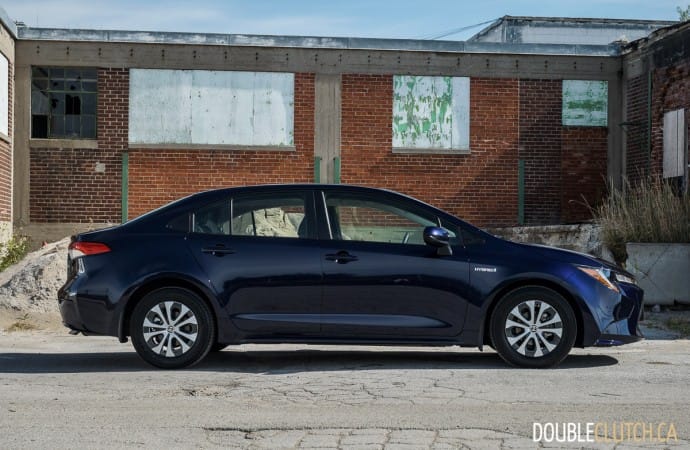
In terms of infotainment, Toyota’s touchscreen interface is better than most. Hard buttons for common menu items flank the 8-inch touch screen, and the menu design is intuitive enough. For the 2020 Sedan, Apple CarPlay becomes available, making for easier smartphone pairing and reduced (but not eliminated!) driver distraction. 2021 should see the addition of Android Auto on the sedan – 2020 Corolla Hatchbacks already have it. A few short years ago, Toyota initially tried to insist on going their own route with the Entune software suite, but couldn’t hold a candle to the Google and Apple juggernauts, which supported more apps, had cleaner interfaces, and had more frequent updates. It’s better late than never here.
After singing so many praises for the 2020 Toyota Corolla Hybrid and other TNGA Toyotas on the Podcast, some of our listeners and readers actually started to wonder if we were collecting an advertising cheque from Toyota (if someone finds that cheque lost in the mail, please send it our way). To that, we chuckle and double down on our assertion that the Corolla is one of the most, if not the most fun car in its class, and we know that many gearheads are not going to believe us. So far this year, we’ve had all forms of the Corolla out on the street, track, and autocross, and we know that it’s very contrary to what Toyota has tended to build over the last many years. It’s going to take a bit of time for this hysteresis to get past the general public, but read our lips: with its balance of value, economy, and performance, this is one of the better cars to come out this year.
See Also:
2020 Toyota Corolla XSE
2019 Mazda3 GS Sedan
2019 Toyota Prius AWD-e

